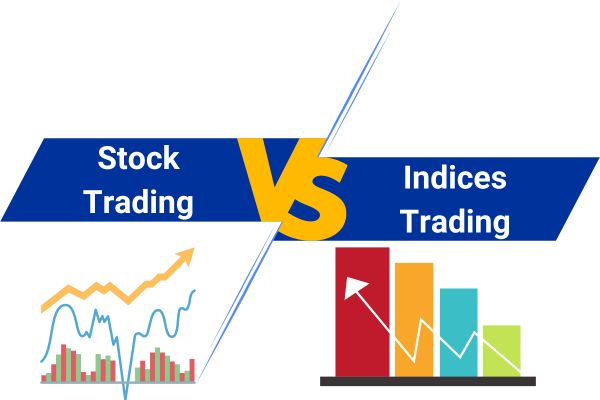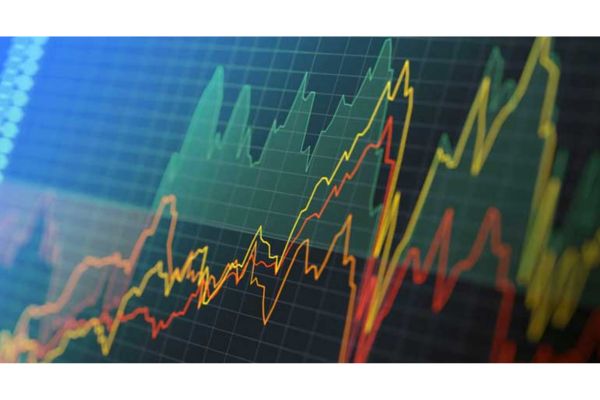What Is Stock Indices Market
Published: February 20, 2024

Trading dates back centuries ago when investors bought a company stock and sold it at a profitable price. In today's world, traders have found an easier, more profitable way to profit from the Financial Market, which is by trading indices.
Briefly, indices are the baskets of a group of stocks. It's far different from individual stock trading. In market index trading, you buy and sell a financial derivative known as an index contract.
Lesson Highlights:
- Market indices trading is the practice of buying and sharing a share for a specific group or basket of stocks. Unlike stock trading, where the focus is solely on individual stocks, index traders center around the overall performance of a stock index.
- The stock market indices have two main classifications: Price-Weighted and Market Capitalization-Weighted.
- Price-weighted indices are focused on the stock price of all included companies, while market capitalization-weighted indices are on the market value of the included companies.
- Market indices are a great benchmark in assessing their respective country's stock market performance and economic health.
Stock Trading vs. Indices Trading

" Is stock trading the same as the indices trading?"
That's the common question a beginner trader asks. And I get it!
While stock trading and indices trading are related, these financial markets are different instruments.
Individual Stock Trading
Stock trading is what you have in mind—it involves buying and selling shares of an individual company. When you invest in the stock market, you don't just expect to profit from the dividends or when the company pays you for your position.
In stock trading, you can also expect to profit from your shares through price fluctuations.
Yes, you profit in stock trading even when the market fluctuates—just remember to position your trade properly. The rule of thumb here is to buy at a low market and sell at a high market.
Speaking of low/high stock markets, the primary market mover is the company of the shares you're holding. Of course, it comes together with the economic conditions and geopolitical events.
Here are the key factors you need to closely watch out for when you trade individual stocks:
- Company's Financial Performance
- Management Decisions
- Policy Changes
- Industry Trends
- Overall Market Sentiment
JR, a seasoned stock trader, carefully monitors Apple's performance, particularly as the tech giant prepares to launch a new iPhone model.
Due to disappointing monetary policy changes by the Federal Reserve System (FED), RJ anticipates a downturn in the US economy. With this, he seizes the opportunity to buy 100 shares of Apple at $130 each, investing $13,000.
As the launch date for the new iPhone approaches and the US economy recovers, anticipation builds in the market, and Apple's stock price climbs to $145 per share. At this point, JR finds himself with an unrealized profit of $15 per share.
After a few months of keeping his investment, Apple finally released the new iPhone, making Apple's stock price surge, soaring to $160 per share. This spike aligns perfectly with JR's profit target of $30 per share.
Recognizing the opportunity to capitalize on his investment, JR sells his shares at $160, ultimately realizing a substantial profit of $3,000 from this trade.
Stock Index Trading
Contrary to individual stock trading, a stock index (also known as "indices) involves trading a group of stocks. Yes, the main difference between the two markets is
- Indices trading focuses on a basket of stock
- Stock trading leans to trading a basket of stocks.
With the stock index, you and all investors get to assess the health of the stock market and the group of stocks (index) you aim to trade.
The indices' weighted average is either measured by prices or market value. Here, the measurement can be done with price-weighting and market-capitalization-weighting.
- Price-weighted: Where each stock is organized based on its respective share price.
- Market capitalization-weighted: Where each stock is organized based on its respective market value.
Market Index as Financial Benchmark

As mentioned, the market index evaluates and assesses the performance of a specific financial market. It represents a standardized measure that tracks the performance of a group of securities, such as stocks or bonds, within that market.
How does it work as a benchmark?
You use market indices as reference points to assess the relative performance of investment portfolios, mutual funds, or other financial vehicles. By comparing the returns of a portfolio or fund to relevant indices, you gauge how well your investments are performing compared to the broader market.
Another great use of market indices is for asset allocation and investment strategy decisions. For example, you may use indices to determine the optimal allocation of assets across different sectors or regions based on the market segments' performance.
Popular Stock Market Indices

1. Dow Jones Industrial Average (DJIA)
The Dow Jones Industrial Average, or simply the Dows, is the founding stock market index in the financial market. This was established in 1884 and is considered the oldest stock index.With its long history, this stock index is widely regarded as a barometer of the U.S. stock market's performance.
The Dows comprise 30 large, publicly traded companies across various US sectors. This stock index uses the price-weighted index to calculate the performance of the market.
2. S&P 500
The S&P 500 (or the "Standard & Poor's 500") has been in the financial market since 1957. It's the most popular market index because it accurately represents the US stock market's performance.With this factor, the S&P 500 is widely used by investors, fund managers, and analysts as their financial benchmark.
This index is market-capitalization-weighted; it factors all 500 publicly traded companies in the United States. It multiplies the company's stock price by its total number of outstanding shares.
3. NASDAQ Composite
The NASDAQ Composite was published by the Nasdaq OMX in 1971. It's popular in the technology sector as it gauges the performance and growth of sectorial stocks.This market index includes more than 2,500 stocks listed on the Nasdaq stock exchange. Essentially, it covers a wide range of industries, including technology, biotechnology, and telecommunication sectors.
For stock index calculation, the NASDAQ Composite is a market-capitalization-weighted index. It reflects the performance and market value of all stocks listed on the Nasdaq exchange.
4. FTSE 100
The FTSE 100 (or "Financial Times Stock Exchange") was established in 1984 under FTSE Russell. This market index serves as a benchmark to assess the performance of the UK stock market.Why? Because it comprises the 100 largest companies on the London Stock Exchange. With this, investors and fund managers view this stock index as a sound representation of the UK's stock performance.
FTSE is also a market-capitalization-weighted index. It's calculated based on the total market value of constituent companies' shares.
5. Nikkei 225
The Nikkei 225 was published by the Nikkei Incorporation in 1950. It's popular among investors and fund managers because it serves as a benchmark in assessing the performance of the Japanese stock market and its overall economic health.This stock index represents a wide range of Japanese sectors, including the leading sectors like technology, finance, manufacturing, and services. It encompasses 225 large, liquid companies listed on the Tokyo Stock Exchange.
Unlike some benchmark indices that rely on market capitalization for weighting, the Nikkei 225 factors stock prices to analyze a unique index movement. Using the price-weighted index, Nikkei 225 is calculated by getting the sum of all its constituent companies and dividing it by the divisor.
Okay, stop scratching your head. For the upcoming lessons, you'll look deeper at these common market indices and the best practices to trade such a popular index.
Indices Lesson Outline

- Lesson 1: What Is Stock Indices Market
